CaMpaM: Computer aided Multi-paradigm ModellingMulti-paradigm modelling is at the heart of MSDL research. It combines:
Have a look at the Computer Automated Multi-Paradigm Modeling page, at the twelve Bellairs CAMPaM workshops '04, '05, '06, '07, '08, '09, '10, '11, '12, '13, '14 '15, and at the MoDELS '06, '07, '09, '10, '11, '12, '13, '14 MPM workshops. AToMPM: A Tool for Multi-Paradigm ModellingMBSE4Mechatronics: Model Based Systems Engineering for Mechatronics (IWT-SBO)NEXOR: IOF consortium on Cyber-Physical SystemsMPM4CPS: Multi-Paradigm Modelling for Cyber-Physical Systems (COST Action IC 1404)
cHiPSet: High-Performance Modelling and Simulation for Big Data Applications (COST Action IC1406)
ModelWriter (ITEA2)NECSIS: Network for Engineering of Complex Software Intensive Systems for Automotive ApplicationsAToM3: A Tool for Multi-formalism and Meta-Modelling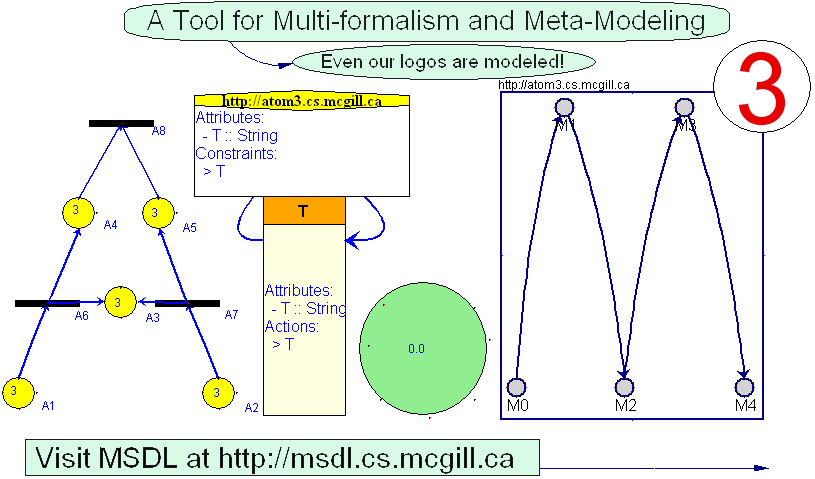
AToM3 is a CaMpaM tool the MSDL is currently developing. Have a look at AToM3's preliminary home page. Note that AToM3 is currently being re-designed from the bottom up. At the basis are hierarchical graphs (see Marc Provost's page for a description of the Python Graph Kernel PyGK), the system is independent of any GUI, everything is truly a model (including graph grammars) and can thus be transformed, and the system is mostly bootstrapped. adapID - advanced applications for electronic IDentity cards in Flanders
[twiki]
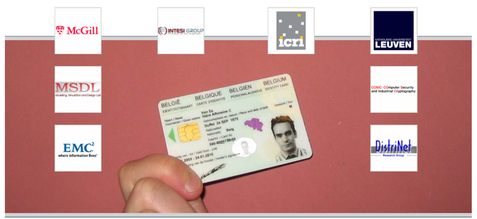
ODE to DEVS transformation
The transformation between an Ordinary Differential Equation (ODE) model (possibly specified in the form of a Causal Block Diagram) and a behaviourally equivalent DEVS discrete event model has several merits.
For a short description of our work, see Jean-Sebastien Bolduc's doctoral proposal (pdf). Recently, this work has evolved into not only explicitly modelling and simulating systems under study, but also different types of experiments. The semantics of variable structure hybrid formalismsIn this project we investigate a general framework to support multi-paradigm modelling of systems that have an evolving structure. The aim is to develop a uniform method (and a tool) for adapting formalisms to deal with dynamic structure, rather than manually designing their variable structure variants. The focus is on DEVS and Statecharts (and variations and combinations thereof). For more information visit Ernesto Posse's website. Beowulf commodity cluster for distributed computation 
In July 2001 Profs Karel Driesen and Hans Vangheluwe were awarded over 100,000$ (matched in equal amounts by McGill University and the Province of Quebec adding up to a total of over 300,000$) equipment by the Canada Foundation for Innovation (CFI) for the establishment of a Modelling, Simulation, and Adaptive Computation infrastructure (mainly a Beowulf cluster with 32 dual-core nodes and 8Gb central memory connected by a Gigabit network switch). A short description of the project (and pictures) will be put up soon. Multi-domain Physical Systems Modelling: Modelica
Extend (to make it a multi-formalism and meta-modelling language) the semantics of Modelica, a de facto standard modelling language for physical systems modelling. In his M.Sc. thesis, Steven Xu has built a research prototype Modelica compiler. WEST++ and the Model Specification Language (MSL)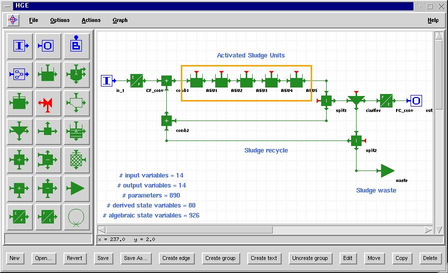

WEST++ (core, designed by Hans Vangheluwe and the WEST++ team at BIOMATH) and its commercial implementation Hemmis WEST form the basis for the next generation of Waste Water Treatment Plant modelling. It is an excellent example of a Domain-Specific Modelling and Simulation Environment. As such, it acts as a example for our recent research into the use of meta-modelling and model transformation for the generation of Domain-Specific environments. We plan to use meta-modelling and model transformation to generate a much improved WEST++. Software specification/synthesis Statecharts (and Class Diagrams)Currently focused on the automatic generation of GUIs from Statechart specifications (modelling in AToM3, simulation in SVM and code generation using SCC). This will allow bootstrapping of the AToM3 GUI. There is extensive documentation on SVM and SCC. For those interested in more in-depth information on SVM and SCC, have a look at Thomas Feng's M.Sc. thesis. A pertinent example of the use of Statecharts is in Denis Dubé's M.Sc thesis (Chapter 3). It describes how hierarchies of Statecharts can be used to synthesize visual modelling environments, including layout. 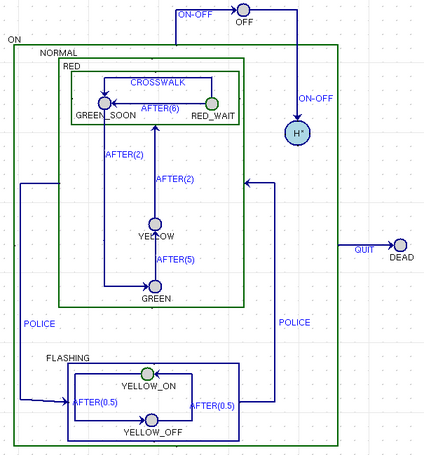
Discrete EVent System specification (DEVS)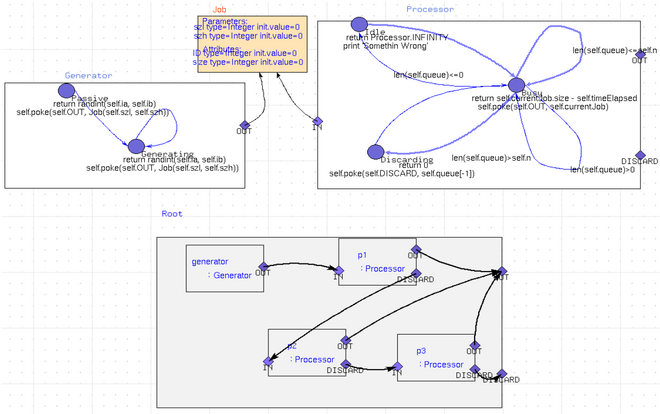
Locus: A Framework for the Development of Agent-Based and Cellular Systems © Francescu Quilici Games Research at McGill (GRaM)
MSDL's contribution to GRaM is currently in synthesis of (1) efficient AI code
from DCharts and (2) efficient physics simulation code from Modelica.
 Useful links |
| Maintained by Hans Vangheluwe. | Last Modified: 2008/09/16 02:14:04. |